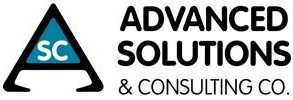Scope creep – “the problem” is one of the most common challenges you might face in implementing an Enterprise Resource Planning solution. Even for a carefully planned ERP project, this “problem” might spell disaster. Effectively managing unplanned increase in project scope, determines the success of your ERP project
What is scope creep?
In the context of ERP project, scope creep refers to constantly adding requirements (scope) from the end-users while the system implementation is in progress (Fig 1). As expectations grow out of control, project deliverables get stretched much beyond the original planned scope. Most often you will discover more features while software deployment occurs, leading to “the problem”. Lack of efficient team collaboration and unplanned surprises during data migration are other common causes.
With years of successful software implementations, Advanced Solutions and Consulting has mastered scope creep management. We pay attention to the complete lifecycle of the implementation namely before, during and after.
What are the consequences of scope creep?
This “problem” could result in several untoward consequences (Fig 2). It might lead to frustration with the software and often disappointment with the VAR. Project completion takes longer than expected. This also affects the budget as project costs keep spiraling. The end product, even with the additional functionalities, might fail to impress the users. This in turn creates unnecessary stress on the project team. Needless to say, feature creep might sometimes result in complete ERP project failure.
What steps can be taken to avoid or minimize scope creep?
Advanced Solutions and Consulting recommends the following steps to successfully manage unintended increase in project deliverables during ERP implementation (Fig 3).
- Carefully analyze software requirements with your team members, even before selecting your ERP VAR. Be sure to keep the end users in the loop while gathering project requirements. Once this is done, define your project scope right at the outset.
- Use visual tools to paint a picture of the various phases of ERP deployment. This will facilitate better understanding of project budget, scope and timeline.
- Create a work breakdown structure (WBS). This will provide a framework of tasks necessary to accomplish ERP deployment. The WBS defines in details the total work scope of the project including critical milestones.
- Monitor the project scope continually. For instance, a project log could be used to thoroughly document changes or new requirements as they emerge during the implementation process. This serves as a useful tool to track unplanned increase in project scope.
What are the Next Steps?
Please contact us now and see how Advanced Solutions & Consulting will give you a leg up. It’s all about before, during and after implementation and go live.
Please contact Jim Carroll: @ jcarroll@solutionsco.com; 310 508 9700; President Advanced Solutions & Consulting; Solana Beach, CA.



